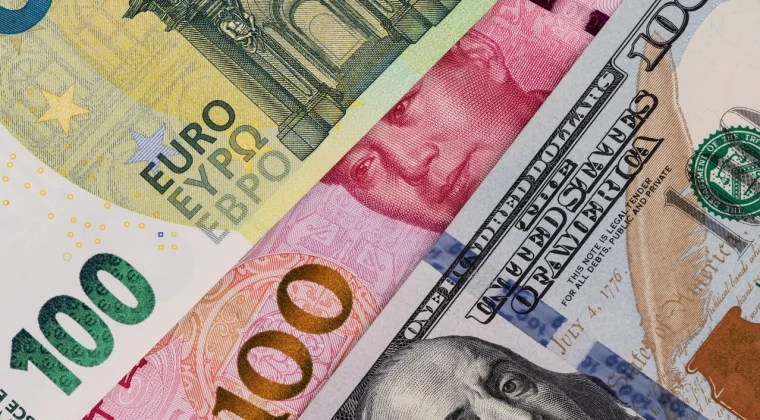-
- Plateformes de trading
- Application PU Prime
- MetaTrader 5
- MetaTrader 4
- PU Copy Trading
- Trader Web
- PU Social
-
- Conditions de Trading
- Types de compte
- Spreads, Coûts et Swaps
- Dépôts et Retraits
- Frais et Charges
- Heures de Trading

Key Takeaways:
*EUR supported by German rebound and policy tailwinds: Stronger-than-expected German industrial output (+1.2% MoM) offers hope for a cyclical recovery, underpinning euro strength.
*Dollar weakness and reserve status boost sentiment: ECB officials cite the euro’s growing global role amid concerns over U.S. fiscal health, Fed credibility, and rising dollar skepticism.
*Risks linger as retail dips and exports face headwinds: Despite structural support, weak eurozone retail sales and a stronger euro’s drag on exports could cap further upside near multi-year highs.
Market Summary:
The Euro continues to find support against a broadly bid U.S. dollar, bolstered by resilient eurozone fundamentals and a growing narrative of structural realignment. While May’s retail sales dipped by 0.7% MoM, Germany’s industrial production bounced back with a 1.2% monthly gain, offering early signs of a manufacturing-led cyclical recovery. ECB officials, including Greece’s Stournaras, have added to bullish sentiment by highlighting the Euro’s rising role as a global reserve alternative amid U.S. fiscal challenges, increasing political risk, and a weakening dollar narrative.
The European Union’s long-term strategic initiatives—including the NextGenerationEU recovery fund and efforts to deepen Banking and Capital Markets Unions—are gradually enhancing the Euro’s international credibility. At the same time, the bloc has so far avoided direct exposure to Washington’s latest tariff offensive, which spared major EU economies and concentrated instead on key Asian exporters. This geopolitical reprieve may offer the eurozone additional breathing room to consolidate economic gains.
Still, the Euro faces headwinds of its own. Export competitiveness is at risk if the currency continues to strengthen, and sluggish consumer spending remains a concern. EUR/USD is currently consolidating just below multi-year highs near $1.1830, with any retreat below $1.1685 likely signaling the beginning of a corrective phase. Ultimately, the Euro’s medium-term outlook will be shaped by incoming macro data, the durability of industrial momentum, and the broader global response to Washington’s renewed protectionist posture.
EUR/USD has pulled back from recent highs, slipping below near-term resistance and currently consolidating around the 1.1735 level. The pair is showing signs of fatigue after its recent rally, with bullish momentum stalling as traders reassess interest rate expectations and broader economic signals from the eurozone and the U.S.
Technically, the Relative Strength Index (RSI) has eased to 47, drifting below the neutral 50 mark and signaling a loss of upward momentum. This dip suggests a weakening bullish bias, and unless RSI reclaims ground above 50, downside risks may begin to dominate in the short term.
The MACD paints a similarly cautious picture. A bearish crossover is in play, and both the MACD line and histogram have slipped below the zero line. This setup reflects growing bearish momentum and highlights a potential shift in sentiment following the failed attempt to hold above the 1.1840 resistance zone.
At present, EUR/USD appears vulnerable to a broader corrective phase, especially if 1.1690 support gives way. A sustained break below this level could confirm the transition from a bullish to a more neutral-to-bearish structure in the near term.
Resistance Levels: 1.1840, 1.1910
Support Levels: 1.1690, 1.1490

Tradez le Forex, les indices, Métaux et plus encore avec des spreads faibles et une exécution ultra-rapide.
Inscrivez-vous pour un compte réel PU Prime grâce à notre procédure simplifiée.
Approvisionnez facilement votre compte grâce à un large éventail de canaux et de devises acceptées.
Accédez à des centaines d’instruments avec les meilleures conditions de trading.